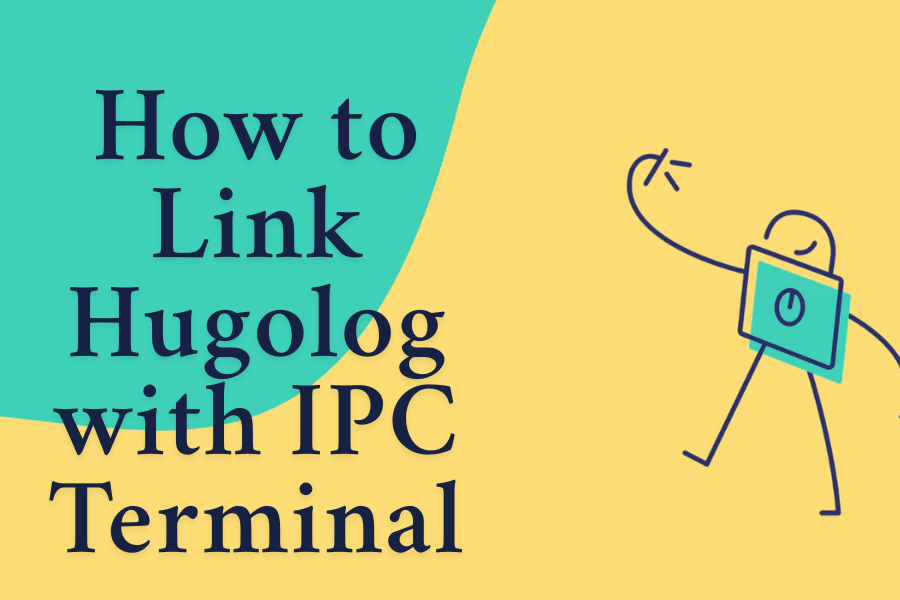How to Link Hugolog with IPC Terminal: Everything You Need to Know
Integrating different software systems is essential for businesses today, especially those in logistics. One of the key integrations that companies often prioritize is between Hugolog, a leading logistics management platform, and IPC Terminal, a sophisticated terminal operating system. In this guide, we’ll show you how to link Hugolog with IPC Terminal, ensuring a seamless exchange of data and enhancing operational efficiency.
Understanding the Core Systems: Hugolog and IPC Terminal
What is Exactly Hugolog?
Hugolog is a robust logistics platform that simplifies supply chain management for businesses. It provides tools for tracking shipments, managing orders, overseeing inventory, and automating various logistics tasks. Key features include real-time tracking, route optimization, and automated order management, all designed to help businesses improve efficiency and reduce operational costs.
Hugolog’s compatibility with other systems, such as IPC Terminal, allows it to support the overall logistics ecosystem by integrating crucial data sources.
What is Exactly IPC Terminal?
IPC Terminal is a specialized system used to manage terminal operations, including vessel scheduling, container tracking, and yard management. This platform ensures the smooth flow of cargo through terminals and ports, optimizing container storage and shipment processes. With real-time data integration, IPC Terminal is essential for streamlining terminal operations and enhancing transparency within logistics chains.
Why It’s Important to Learn How to Link Hugolog with IPC Terminal
Streamlining Real-Time Data
When you learn how to link Hugolog with IPC Terminal, you ensure that real-time data flows smoothly between both systems. This seamless data exchange means logistics managers can rely on up-to-the-minute information to make informed decisions, whether it’s about shipment statuses, delivery schedules, or terminal capacity.
Increased Operational Efficiency
By integrating Hugolog with IPC Terminal, data exchange is automated, reducing the need for manual entry and minimizing human error. This leads to more efficient processes and improved coordination across different teams. Automation can streamline various operations such as tracking shipments, managing containers, and dispatching orders, ultimately saving time and resources.
Reducing Errors and Delays
Learning how to link Hugolog with IPC Terminal helps prevent delays and errors that arise when data between systems is outdated or mismatched. With automated, real-time data exchange, the risk of discrepancies between the systems is greatly reduced, ensuring smoother operations.
Better Reporting and Analytics
Integrating Hugolog with IPC Terminal allows businesses to generate more comprehensive reports. By combining the logistics data from Hugolog and terminal operation insights from IPC Terminal, companies can gain valuable insights that help optimize overall performance.
Step-by-Step Process: How to Link Hugolog with IPC Terminal
Step 1: Establish Your Integration Goals
Before connecting Hugolog with IPC Terminal, it’s crucial to define what you aim to achieve. This could involve automating data exchange, optimizing shipment tracking, or improving terminal management. Setting clear objectives will guide the integration process and ensure it meets your specific needs.
- Identify Essential Data Points: Understand which data needs to flow between Hugolog and IPC Terminal, such as shipment status, container numbers, and terminal availability.
- Plan for Future Growth: Keep in mind that your integration might need to support future enhancements, such as new software connections or additional data fields.
Step 2: Choose the Data Transfer Method
To link Hugolog with IPC Terminal, you must choose the right method for data transfer. Several approaches exist, including:
- APIs (Application Programming Interfaces): APIs facilitate real-time data exchange between systems, making them ideal for continuous updates and integration.
- Transfers of File (e.g., XML, CSV): If APIs are unavailable, you can transfer bulk data using files like XML or CSV.
- EDI (Electronic Data Interchange): EDI is commonly used in logistics to automate document exchanges, such as purchase orders and shipment notifications.
Step 3: Align and Transform Data
Once the data transfer method is selected, the next step is to ensure that the data from Hugolog and IPC Terminal is compatible. This involves data mapping and transformation to ensure that information from one system can be properly interpreted by the other.
- Match Data Fields: Both systems will have fields that need to align, such as container IDs and shipment statuses.
- Apply Format Transformation: Data from Hugolog and IPC Terminal may use different formats, so transformations are necessary to ensure they’re compatible.
Step 4: Develop and Test the Integration Interface
The next step in learning how to link Hugolog with IPC Terminal is to develop an interface that will facilitate the smooth exchange of data between both systems. Once the interface is developed, it’s important to perform rigorous testing to ensure data accuracy and system compatibility.
- Test for Accuracy: Verify that data is exchanged accurately between the systems.
- Simulate Real-World Operations: Ensure the integration performs well under normal business conditions and during potential disruptions.
- Implement Error Management: Any errors during the integration should be addressed with clear recovery steps to maintain system stability.
Step 5: Deploy and Monitor Integration
After successful testing, deploy the integration in a live environment. Monitor its performance closely during the initial phase to ensure everything runs as expected.
- Data Flow Monitoring: Track real-time data exchange to confirm that the systems are working seamlessly.
- Performance Assessment: Use metrics like data accuracy and response time to evaluate the integration’s efficiency.
Step 6: Maintain and Update the Integration
An integration isn’t a one-time task; regular maintenance is necessary to ensure long-term success.
- Stay Informed About Updates: Be aware of updates in both Hugolog and IPC Terminal that could impact the integration.
- Schedule Regular Maintenance: Plan for periodic maintenance during low-traffic times to prevent disruptions.
Best Practices for Linking Hugolog with IPC Terminal
Comprehensive Documentation
Create detailed documentation that outlines the integration’s architecture, data mapping specifications, and troubleshooting steps.
Engage Stakeholders Early
Involve key stakeholders like IT professionals and logistics managers early in the process to ensure the integration aligns with everyone’s needs.
Regular Testing
Perform regular tests to ensure that the integration continues to work smoothly, particularly after updates or changes in operations.
User Training
Provide training to ensure end users understand the new workflows and data management processes.
Common Integration Challenges and Their Solutions
Issues of Data Compatibility
Differences in data formats between Hugolog and IPC Terminal can create compatibility issues.
- Solution: Use middleware or transformation tools to convert data and ensure compatibility.
Downtime of System
Unexpected downtime can disrupt real-time data exchange.
- Solution: Perform integration activities during off-peak hours and prepare for downtime with backup systems and error recovery procedures.
Security Concerns
When transferring sensitive data, security is a primary concern.
- Solution: Use encryption, secure transfer protocols, and authentication methods to protect data integrity.
Key Facts about “How to Link Hugolog with IPC Terminal”:
- Real-Time Data Integration:
Linking Hugolog with IPC Terminal enables the seamless flow of real-time data, ensuring that both systems have up-to-date information on shipments, container statuses, and terminal operations.
- Enhanced Operational Efficiency:
The integration automates key logistics tasks such as tracking, order management, and container handling. This reduces manual input, minimizes human error, and leads to more efficient coordination across teams.
- Improved Reporting and Analytics:
By integrating both platforms, businesses gain a comprehensive view of logistics and terminal operations. This combined data enables the generation of powerful reports, helping businesses identify areas for improvement and optimize performance.
- Minimized Delays and Errors:
With automated data exchange between Hugolog and IPC Terminal, the risk of delays and discrepancies is significantly reduced, ensuring smoother operations and better decision-making.
- Simplified Data Transfer Methods:
The integration can be achieved through different data transfer methods such as APIs for real-time updates, file transfers (XML, CSV) for bulk data, or EDI for automated business document exchanges, making it flexible for different operational needs.
Conclusion
Learning how to link Hugolog with IPC Terminal offers significant advantages in optimizing logistics and terminal operations. With seamless data exchange, reduced errors, and improved efficiency, businesses can better manage their supply chain operations. By following the outlined steps, including setting goals, selecting the right data transfer methods, and testing thoroughly, companies can successfully integrate the two systems. Continuous maintenance, regular testing, and effective training will ensure the integration continues to support business growth and long-term success.
Frequently Asked Questions
- Why should I link Hugolog with IPC Terminal?
Connecting Hugolog with IPC Terminal allows for the smooth flow of real-time data, which boosts efficiency and reduces errors. This integration also provides a clearer, more detailed view of both logistics and terminal operations, helping to minimize delays and improve reporting and analytics.
- How do I decide on the best method to transfer data between Hugolog and IPC Terminal?
When selecting a data transfer method, you can choose from APIs, file-based transfers (like XML or CSV), or EDI. APIs are perfect for real-time updates, while file transfers and EDI are better for bulk data sharing or when APIs are unavailable.
- What is the role of data mapping in the integration?
Data mapping ensures that the data from Hugolog and IPC Terminal matches up properly, so the systems can communicate effectively. This step is crucial to prevent discrepancies and ensure smooth data flow between the platforms.
- What steps can I take to make sure the integration runs smoothly?
To ensure a smooth integration, you need to test thoroughly, including simulating real-life situations and checking for data accuracy. Regular monitoring and routine maintenance are also key to catching potential issues early and fixing them before they escalate.
- What obstacles might come up during the integration process?
Typical challenges include differences in data formats, system outages, or security concerns. These can be managed by using data transformation tools, scheduling integration activities during off-peak times, and implementing secure encryption and authentication protocols.
- How do I keep the integration functioning properly over time?
Ongoing maintenance includes staying up-to-date on software changes, conducting regular tests, and planning for system downtimes or updates. It’s essential to have a plan in place to handle any new issues that might emerge after the integration is live.
Discover the latest news and updates on Trendy Blogging







